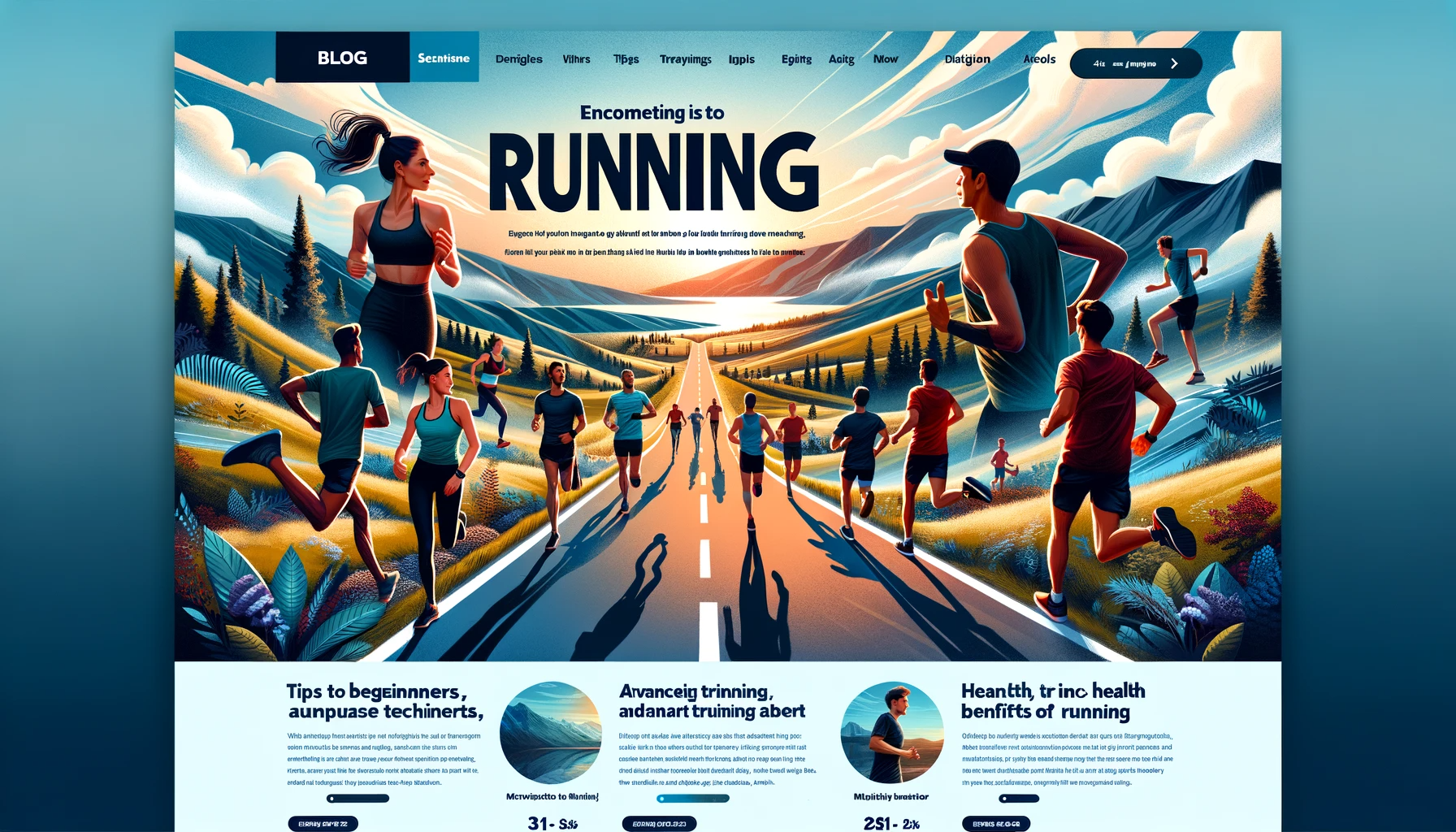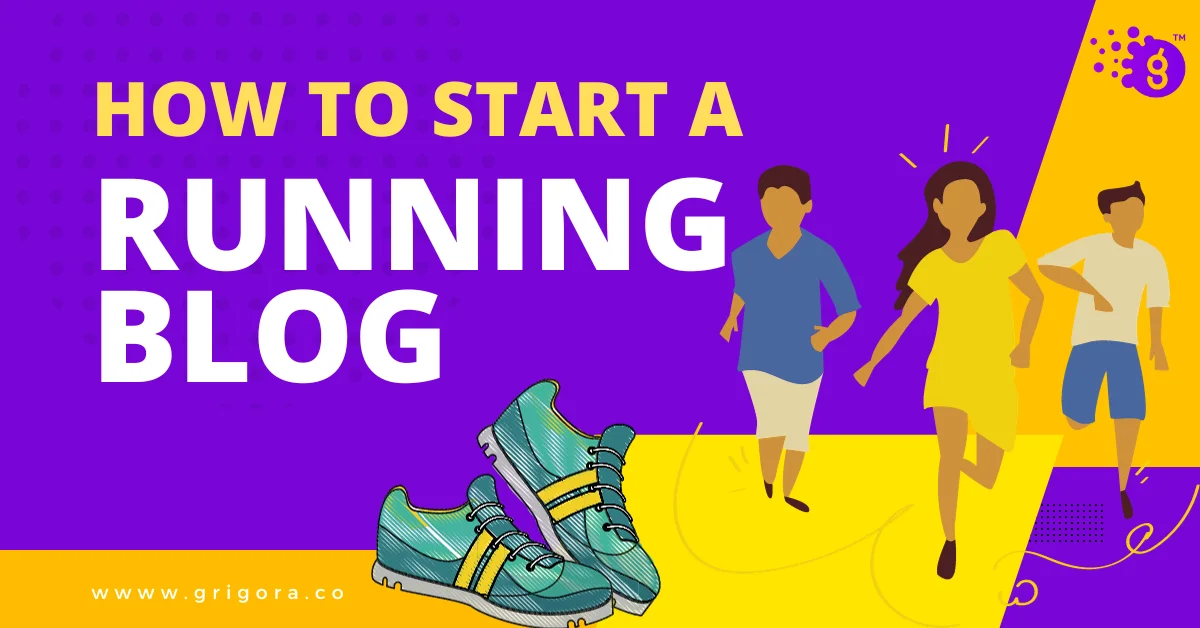Introduction
Running is not just a sport; it's a narrative of personal triumphs, communal encouragement, and the sheer joy of movement. This narrative is what makes running blogs so captivating. They are more than just online journals; they are vibrant communities where stories and experiences intersect, creating a tapestry of inspiration that stretches across the globe.
The allure of running blogs lies in their diversity and relatability. From the seasoned marathoner to the weekend jogger, each runner has a unique story that can motivate and inspire others. These blogs offer a platform to celebrate personal milestones, share training tips, and discuss the challenges that come with the sport. They are a source of motivation for some and a place of solace for others who might find comfort in reading about someone else's journey that mirrors their own.
The popularity of running blogs is not just about sharing experiences; it's about building a community. It's about the collective enthusiasm that comes from discussing the latest running gear, the best trails, and the most effective recovery techniques. It's a space where questions are answered, support is given, and the love for running is unabashedly celebrated.
Exact Steps to Start a Running Blog

Embarking on the journey of creating a running blog can be both rewarding and inspiring. Here's how to get started:
1. Identifying Your Blog's Purpose and Audience:
Clarify your blog's mission, whether it's to motivate beginners, share advanced running techniques, or document your personal running adventures.
Understand who you are writing for to create more targeted and relevant content.
2. Selecting the Ideal Blogging Platform:
Choose a platform that suits your technical skills and content goals. Consider aspects like ease of use, customization options, and scalability.
WordPress, Wix, and Medium are some popular choices among bloggers.
3. Designing Your Blog for Maximum Impact:
Your blog's design should reflect the energy and dynamism of running. Aim for a layout that's both visually appealing and easy to navigate.
Use templates and themes that are specifically designed for sports or lifestyle blogs.
4. Crafting Content That Resonates with Runners:
Focus on creating diverse content like training tips, race reviews, personal experiences, and gear recommendations.
Authenticity and relatability are key to engaging your readers and encouraging return visits.
5. Growing Your Blog's Reach and Community:
Utilize social media, running groups, and online forums to promote your blog and connect with a wider audience.
Foster a sense of community by engaging with your readers through comments, social media, and possibly organizing virtual running events or challenges.
By following these steps, you can successfully launch a running blog that not only shares your passion for the sport but also connects you with like-minded individuals. Consistency in posting and staying true to your unique running perspective are crucial for a thriving blog.
Finding Your Unique Angle
Discovering Your Running Passion
Identifying what excites you about running is the first step in finding your unique angle. Reflect on what aspects of running speak to you most. Is it the endurance aspect, the community, or the solitary challenge?
Niches Within the Running World
Explore various niches within the running community to find where your passion lies. Whether it's trail running, ultra-marathons, road racing, or beginner's advice, each niche offers a unique perspective and audience.
Sharing Personal Stories
Your personal running experiences can be the cornerstone of your blog. Sharing your triumphs, challenges, and the lessons learned along the way can offer a relatable and authentic experience to your readers.
Offering Expertise and Advice
If you have expertise in a particular area, such as running nutrition, injury prevention, or training programs, use it to offer valuable advice. This can establish your blog as a go-to resource for runners seeking guidance.
Engaging with Trends and Events
Stay abreast of the latest running trends and events. Covering these topics can make your content timely and relevant, attracting readers interested in the current happenings in the running world.
Visual Storytelling
Incorporate multimedia elements like photos, videos, and infographics to enhance your storytelling. Visuals of scenic trails, race day preparations, and post-run celebrations can visually engage your audience and bring your narratives to life.
Setting Up Your Running Blog
Choosing the Right Platform
When setting up your blog, the platform you choose can make a significant difference. Grigora stands out for its ease of use and flexibility, making it an excellent choice for both novice and experienced bloggers.
Crafting Your Online Identity
Your domain name is your digital address and is crucial for brand recognition. Choose a name that's memorable and reflective of your running theme. Pair this with reliable hosting to ensure your blog remains accessible and fast.
Blog Design Essentials
The design of your blog should mirror the energy and dynamism of running. Opt for a clean, navigable layout that visitors can interact with easily. Grigora's customization options allow for a personalized touch that can resonate with your audience.
User Experience
A good user experience keeps readers coming back. Ensure your blog is mobile-friendly and fast-loading, with well-organized categories that make finding information effortless.
Integrating Social Features
Incorporate features that allow for social sharing and community building. This can include comment sections, forums, or integration with social media platforms, fostering a sense of community among your readers.
Content Creation
Developing a Content Strategy
Creating a content strategy is pivotal for maintaining a consistent and engaging blog. Plan your topics ahead with a content calendar and aim for a mix of evergreen content that remains relevant over time and timely posts that comment on current events or trends in the running world.
Writing Engaging Posts
Your blog posts should be as vibrant and engaging as the runs you're describing. Share your personal experiences with a storytelling approach, and don't shy away from discussing the challenges and triumphs of running. Multimedia elements like photos and videos can make your stories come alive, offering a visual and emotional connection to your audience.
SEO Best Practices
Optimizing your content for search engines is a must. Use relevant keywords, craft compelling meta descriptions, and employ alt text on images to improve visibility. Grigora's platform can assist with SEO-friendly features, helping your blog to rank higher in search results.
Interactive Content
Consider adding interactive elements such as polls, quizzes, or challenges to engage your readers. This not only makes your blog more engaging but also encourages readers to return and participate.
Guest Contributions
Invite guest bloggers or interviewees from the running community to contribute. This not only diversifies your content but also helps to expand your network and reach.
Building a Community
Engaging with Your Audience
Building a community means engaging with your audience. Respond to comments, encourage discussion, and be present. Your readers should feel that they are a part of your running journey and that their input is valued.
Leveraging Social Media
Use social media platforms to extend your reach. Share snippets of your content, join running groups, and connect with fellow running enthusiasts. Platforms like Instagram and Strava are particularly popular in the running community.
Email Newsletters
Consider starting an email newsletter to keep your audience updated. Regular updates can include run recaps, upcoming events, or previews of future blog content. This direct line of communication can be a powerful tool to foster loyalty.
Hosting Virtual Events
With the rise of virtual races and challenges, hosting an event can be a great way to build community. Use your blog to organize and promote these events, encouraging your readers to participate and share their experiences.
Community Spotlights
Feature stories or achievements from your community members. This not only celebrates your readers but also encourages others to share their stories, creating a rich tapestry of experiences on your blog.
SEO and Monetization
SEO Tips for Running Blogs
To increase your blog's visibility, SEO is essential. Use relevant keywords in your content, titles, and meta descriptions to ensure that your blog appears in search results for running-related queries. Tools like Google Keyword Planner can help you find the right keywords.
Understanding Analytics
Google Analytics is a powerful tool for understanding your audience. Track which posts are the most popular, where your traffic is coming from, and what keywords are driving visitors to your site.
Monetization Strategies
There are several ways to monetize your blog. Affiliate marketing is one, where you can earn commissions by promoting running gear or services. Sponsored content is another, where brands pay you to write about their products.
Offering Exclusive Content
Consider offering exclusive content or memberships for a fee. This could include detailed training plans, personalized coaching, or access to exclusive webinars and Q&A sessions with you.
Display Advertising
Using display ads through services like Google AdSense can provide a steady income stream. Place ads strategically on your blog without disrupting the user experience.
Promoting Your Blog
Leveraging Social Media
Social media platforms are invaluable for blog promotion. Share your content on Facebook, Instagram, Twitter, and Pinterest. Use hashtags related to running, join running groups, and engage with your followers to increase visibility.
Email Marketing
Create an email newsletter to keep your audience informed about new posts. Offer incentives for signing up, like exclusive content or early access to your posts.
Networking with Other Bloggers
Connect with other running bloggers. Guest posting on each other's blogs or sharing each other's content can help you reach a broader audience.
Participating in Online Forums
Join running forums and online communities. Participate in discussions and share your expertise, along with a link to your blog when relevant.
Hosting Virtual Events
Consider hosting webinars, live Q&A sessions, or virtual runs. These events can drive traffic to your blog and help you engage with your audience on a deeper level.
Maintaining and Growing Your Blog
Consistent Content Updates
To keep your audience coming back, it's crucial to maintain a steady stream of content. This doesn't mean you have to post every day, but you should establish a consistent schedule, whether that's weekly, bi-weekly, or monthly.
Expanding Your Topics
As your blog grows, consider expanding into related topics that would interest your readers, such as nutrition, cross-training, or even running gear reviews. This can attract a wider audience and provide more value to your current readers.
Engaging with Your Community
Don't just post content—engage with your readers. Respond to comments, ask for feedback, and encourage discussions. This can turn casual readers into a loyal community.
Analyzing Your Performance
Use tools like Google Analytics to track your blog's performance. Look at metrics like page views, bounce rate, and session duration to understand what content resonates with your audience and what needs improvement.
Continuous Learning
The blogging landscape is always changing, so it's important to stay informed about the latest trends in both running and blogging. Attend webinars, read other blogs, and continuously look for ways to improve your own blog.
FAQs
How do I choose the right niche for my running blog?
Choosing the right niche involves identifying what you are passionate about and what can resonate with your audience. Look for gaps in the current market—perhaps there's a lack of information on running for different age groups or specific advice for running in certain climates. Find a unique angle that sets you apart.
What are some effective ways to monetize my running blog?
Monetization can come from various sources such as affiliate marketing, sponsored content, selling digital products like training plans, or even creating a membership area for exclusive content. Diversify your revenue streams to maximize your blog's earning potential.
How often should I post new content on my running blog?
The frequency of posts can vary, but it's the consistency that's key. Starting with one post per week is a good way to build a habit and establish expectations with your audience. As you grow, you may increase the frequency, but always prioritize quality over quantity.
Can I start a running blog if I'm not a professional runner?
Absolutely! Many successful running blogs are run by amateur runners. Your perspective as a non-professional can be relatable and inspiring to others. Share your personal journey, challenges, and successes. Authenticity attracts readers.
What are the best ways to promote my running blog to reach a wider audience?
Promotion strategies include SEO, social media marketing, guest posting on other blogs, and engaging with online running communities. Don't forget offline methods too, like local running clubs or events. Leverage both online and offline opportunities to promote your blog.
Conclusion
Starting a running blog is an exciting venture that can connect you with a global community of runners and enthusiasts. It's a platform where you can share your passion, inspire others, and even turn it into a profitable business. Remember, the key to a successful blog is to provide value, be consistent, and engage with your readers. With dedication and the right strategies, your running blog can go the distance.



